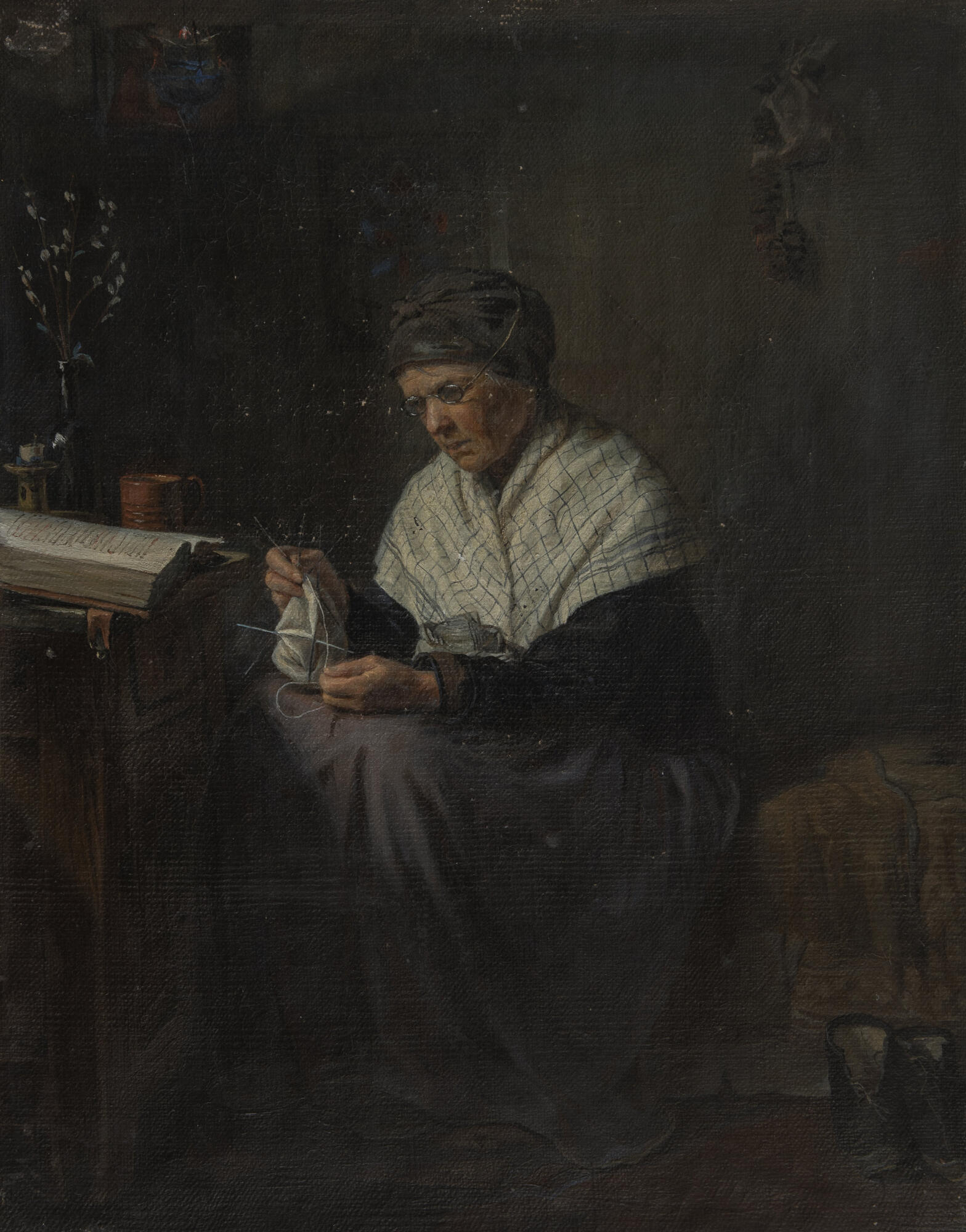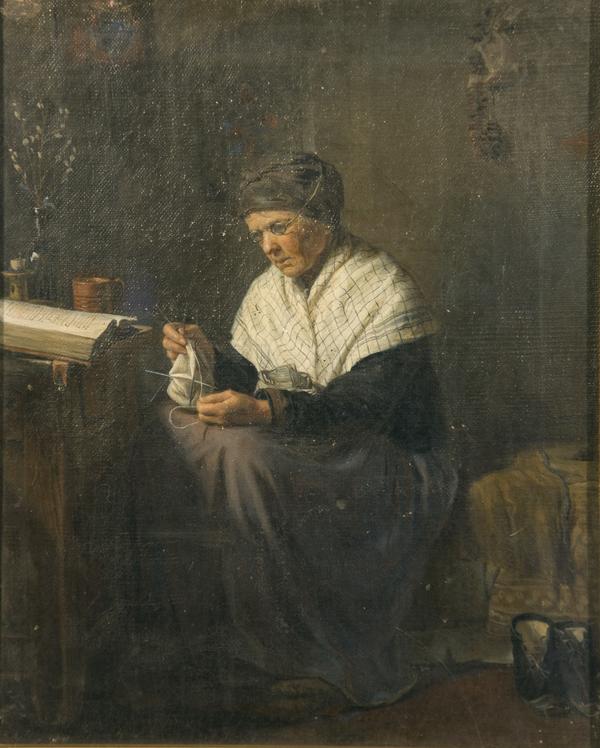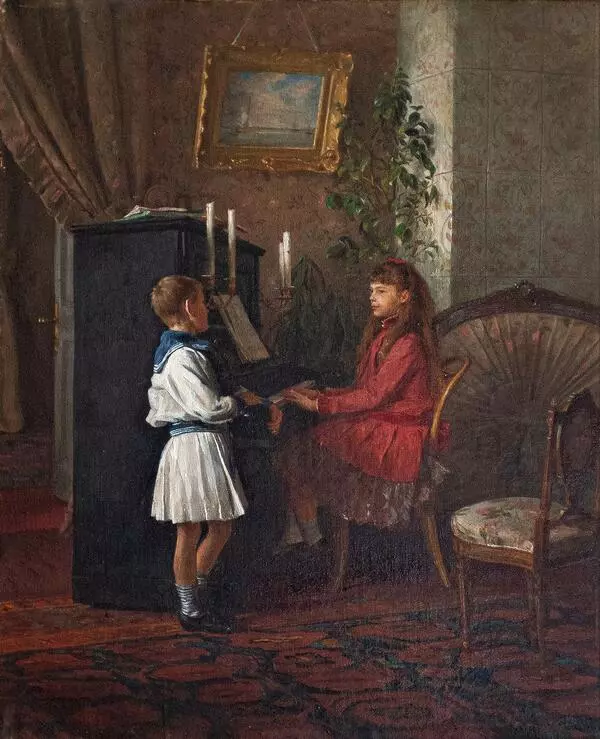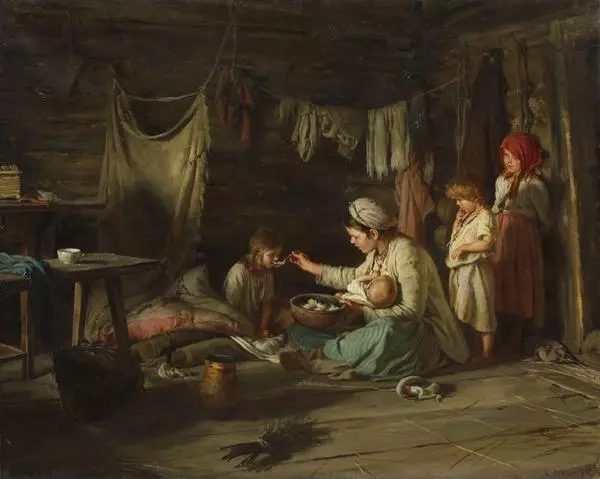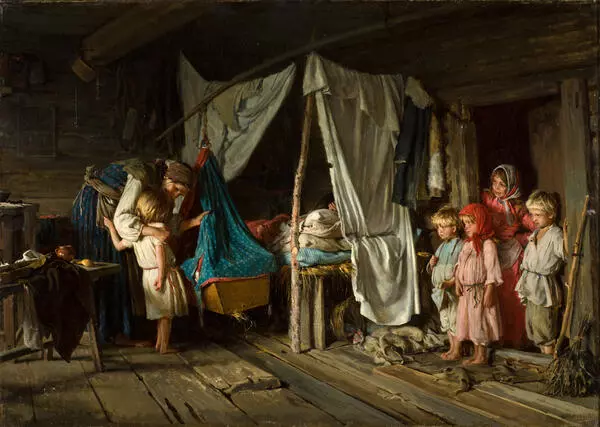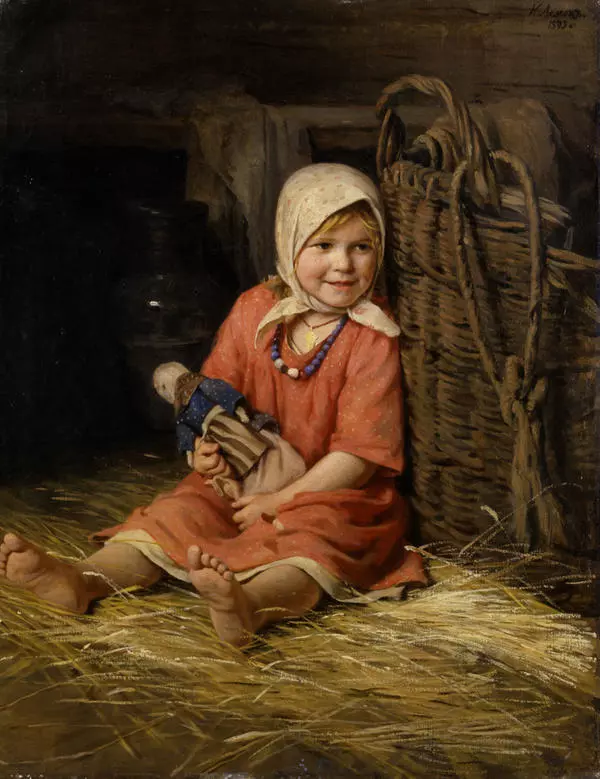The Ostrogozhsk Museum houses a painting by the artist Carl Lemoch depicting Anastasiya Ivanovna Kramskaya, the mother of the painter Ivan Kramskoy.
Carl Vikentievich Lemoch was a Russian genre painter who studied at the Moscow School of Painting, Sculpture and Architecture and later at the Academy of Arts in St. Petersburg. He participated in the so-called Revolt of the Fourteen. In 1863, Lemoch left the Academy and became one of the founders of the Artel of Artists, and later — the Society for Traveling Art Exhibitions. The artist painted mostly scenes of peasant life that were often characterized by a sentimental interpretation of the images of children and their personality. He also depicted family scenes and sometimes urban life. He lived mostly in St. Petersburg and earned his living by giving private lessons to members of noble families. In the summer, he worked in the village of Khovrino near Moscow where he built his own art studio.
When he was still a member of the Artel, Lemoch accepted the invitation to give private lessons to the children of the future emperor Alexander III, including the last Russian emperor, Nicholas II. For seven paintings exhibited at the academy exhibition in 1875, Carl Lemoch was appointed a member of the Imperial Academy of Arts. As a tutor of the imperial family, Carl Lemoch was provided with a life pension. From 1897 and almost until his death, the artist was the custodian of the art department at the Russian Museum of His Imperial Majesty Alexander III.
Carl Lemoch portrayed Anastasiya Kramskaya wearing glasses and a headband, sitting on the bed, and knitting a stocking. On the wall, there is a bundle of mushrooms, in front of the woman — a thick book titled “Lives of the Saints”, in the pitcher — a blooming willow, and on the floor — warm boots. Ivan Kramskoy invited his mother to visit Moscow where he was painting the Cathedral of Christ the Savior. The elderly woman struggled with getting used to city life: she was not accustomed to eating expensive food and having dinner at seven o’clock — instead, she had lunch at noon and cooked her own food. She went to the grocery store and preferred simple and cheaper food. Ivan Kramskoy tried to persuade her to have dinner at the table with the others, but it was in vain. “God, she is so old, and very kind as always, but simple-hearted in the extreme…” Ivan Kramskoy wrote to his wife.
Carl Vikentievich Lemoch was a Russian genre painter who studied at the Moscow School of Painting, Sculpture and Architecture and later at the Academy of Arts in St. Petersburg. He participated in the so-called Revolt of the Fourteen. In 1863, Lemoch left the Academy and became one of the founders of the Artel of Artists, and later — the Society for Traveling Art Exhibitions. The artist painted mostly scenes of peasant life that were often characterized by a sentimental interpretation of the images of children and their personality. He also depicted family scenes and sometimes urban life. He lived mostly in St. Petersburg and earned his living by giving private lessons to members of noble families. In the summer, he worked in the village of Khovrino near Moscow where he built his own art studio.
When he was still a member of the Artel, Lemoch accepted the invitation to give private lessons to the children of the future emperor Alexander III, including the last Russian emperor, Nicholas II. For seven paintings exhibited at the academy exhibition in 1875, Carl Lemoch was appointed a member of the Imperial Academy of Arts. As a tutor of the imperial family, Carl Lemoch was provided with a life pension. From 1897 and almost until his death, the artist was the custodian of the art department at the Russian Museum of His Imperial Majesty Alexander III.
Carl Lemoch portrayed Anastasiya Kramskaya wearing glasses and a headband, sitting on the bed, and knitting a stocking. On the wall, there is a bundle of mushrooms, in front of the woman — a thick book titled “Lives of the Saints”, in the pitcher — a blooming willow, and on the floor — warm boots. Ivan Kramskoy invited his mother to visit Moscow where he was painting the Cathedral of Christ the Savior. The elderly woman struggled with getting used to city life: she was not accustomed to eating expensive food and having dinner at seven o’clock — instead, she had lunch at noon and cooked her own food. She went to the grocery store and preferred simple and cheaper food. Ivan Kramskoy tried to persuade her to have dinner at the table with the others, but it was in vain. “God, she is so old, and very kind as always, but simple-hearted in the extreme…” Ivan Kramskoy wrote to his wife.
